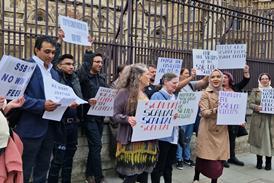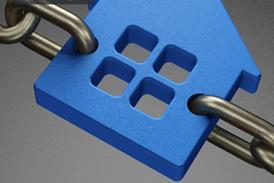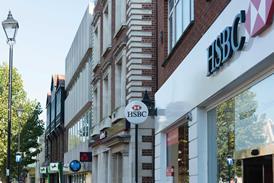Using intellectual property as security
It is increasingly popular to offer or take intellectual property rights - from patent portfolios to software copyright to trade marks - as security for loans. Depending on the nature of the rights, choices need to be made on the form of the security, and there are a number of points that should be checked to maximise the reliability of the security.
Due diligence
The first step is to assess the validity of the rights on offer. The nature of this due diligence depends on whether the right is registered (for example, patents, registered designs, registered trade marks) or unregistered (for example, unregistered designs, unregistered trade marks, copyright, database right).
Information about registered rights (or about applications to register rights) can be checked on the relevant Patent Office register.
Ownership of a registerable intellectual property right should be registered, and clearly a lender will want to check this. Failure to register does not invalidate ownership, but will mean that the lender cannot record its security interest against the right, and there can be other negative consequences (damages for infringement may not be recoverable, for example).
Renewal fees are payable on registered rights and the lender needs to make sure that these are up to date. There is a six-month grace period in which overdue renewal fees can be paid, after which the right will be removed from the register and the relevant security interest will come to an end. It might be a condition of the security that the borrower will pay renewal fees as they fall due, perhaps with a provision that the security will be redeemable if any renewal fees become overdue.
Lenders need to consider the duration of the intellectual property right and whether it will subsist for the expected lifetime of the loan. Trade marks can be perpetual (subject to the payment of renewal fees), while patents and registered designs have a limited term.
Security granted over intellectual property rights will be subject to any previously registered security, and so a search of the Register of Companies is needed for earlier registered securities. Licences to use rights can be registered with the Patent Office, and so the register should be checked for licences that might impact on the future use or resale value of the right.
In the case of unregistered intellectual property rights, due diligence is more limited because there is no register to refer to. Therefore, the lender will need an appropriate set of warranties and indemnities from the borrower, perhaps based on a set of due diligence questions and answers. For example, when securitising copyright in software, the lender will want to know who first created the software, and to see any contracts transferring ownership from the creators to the borrower. Again, a search for earlier securities that might capture the copyright work can be undertaken at Companies House.
Taking security
The nature of the charge or mortgage over the intellectual property right again often turns on whether the right is registered or unregistered.
Registered rights are often secured by a fixed charge that gives the lender an equitable interest in the right while the borrower retains legal ownership. The lender will ideally want the security to continue for the life of the loan, with full title guarantee, and to include the powers of sale and the power of attorney to deal in the right if the borrower fails to repay the loan. The lender may require that the borrower execute the security document as a deed, so that it will enjoy the statutory rights of sale and to appoint a receiver (see sections 101(1)(i) and (iii) of the Law of Property Act 1925). The charge could also include restrictions to protect the lender's interest, for example a requirement that the borrower seek the lender's consent before using the right in a particular way.
A legal mortgage is often the lender's preferred vehicle for taking security over unregistered intellectual property rights.
Legal ownership of the unregistered right transfers to the lender, while the borrower retains an equitable interest. Legal ownership reverts to the borrower on repayment of the loan, and if the borrower defaults, then the lender is entitled to redeem the mortgaged intellectual property right. Again, the lender will want express powers of sale and attorney in the event of default, and may require that the mortgage is executed as a deed to enjoy the statutory powers of sale/appointment of a receiver. The mortgage deed may contain a royalty-free licence to the borrower to allow it to continue to use the right in its business.
If the scope of the unregistered intellectual property right can be precisely defined (for example, copyright in particular software code), then it may be possible to take a fixed charge over the unregistered right.
However, there is no rights registration system to protect the lender against a third party that acquires a later interest in the right without knowledge of the lender's interest.
Registration at Companies House (see below) may provide such notice, but there is case law to suggest that the effectiveness of such notice depends on whether it would be normal practice for that type of transaction to search the Register of Companies (see Manchester Trust v Furness [1895] 2 QB 539).
Security over unregistered intellectual property rights may take the form of a floating charge, which hovers over the unregistered right unless default by the borrower causes the floating charge to crystallise into a fixed charge. However, the borrower is free to deal in the right until the floating charge crystallises, and so there is a real risk of it disposing of the right before crystallisation.
Furthermore, the holders of floating charges stand behind the holders of fixed charges and preferential creditors as regards the proceeds of sale. Therefore, this form of security is generally only used where the unregistered right is relatively low value, and/or forms part of a longer list of assets secured by the floating charge.
Registration of security
Any mortgage, assignment by way of security, licence or charge over registered intellectual property rights should be registered as soon as possible at the Patent Office. There is no statutory time-limit for registration, but a recorded interest will take priority over an unrecorded interest (even an earlier unrecorded interest) and so it should be done quickly.
To register, the relevant form needs to be submitted (patent form 21/77; trade mark form TM24; registered design form DF12A). Unless the form is executed by both lender and borrower, a copy of the security agreement needs to be submitted as well.
Companies should register debentures and floating charges over intellectual property rights with the Registrar of Companies within 21 days of executing the security document (following part XII of the Companies Act 1985; the obligation to register also applies to limited liability partnerships). Registration is the borrower's responsibility, but the lender's solicitors will often take this on, since the consequences of non-registration are so serious. Registration is completed by submitting form 395, the security agreement, and a filing fee to Companies House.
Intellectual property rights are often multi-jurisdictional in character, and a point to bear in mind is that these strategies will not always be effective to secure rights in other jurisdictions. For example, in civil law jurisdictions, there is no concept of equity, which may impact on the nature of the security taken.
Rights in other jurisdictions are certainly capable of being taken as security, but solicitors and clients might need to adopt different strategies and seek foreign law advice.
By Richard Taylor, DLA Piper, Yorkshire
Charity Explorer provides a reputable reference tool for solicitors, will-writers and their clients who want to leave a legacy or charitable gift.
Visit Charity Explorer
Whether you are looking for legal expert witnesses, legal training/CPD providers, international law firms, administration of estates, legal software suppliers, barristers chambers or any other general legal service, the Legal Services Directory will provide a suitable option.
Visit Legal Services Directory
























No comments yet